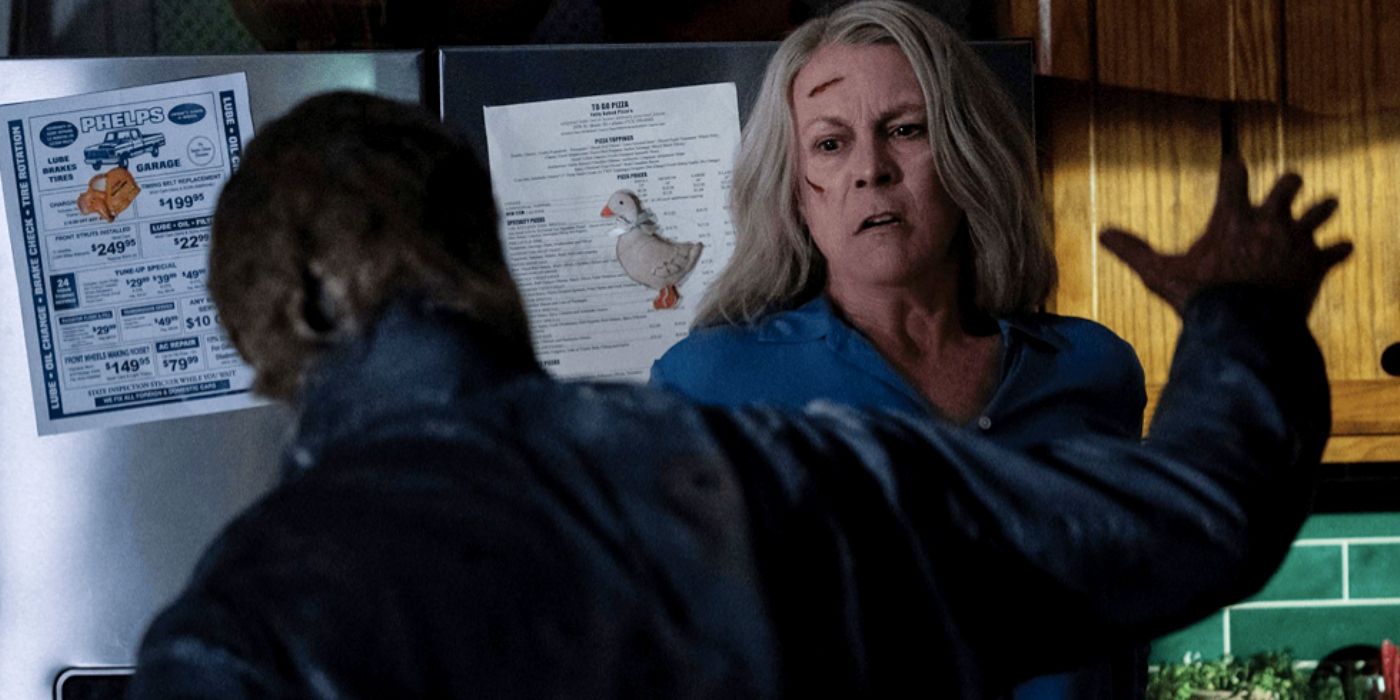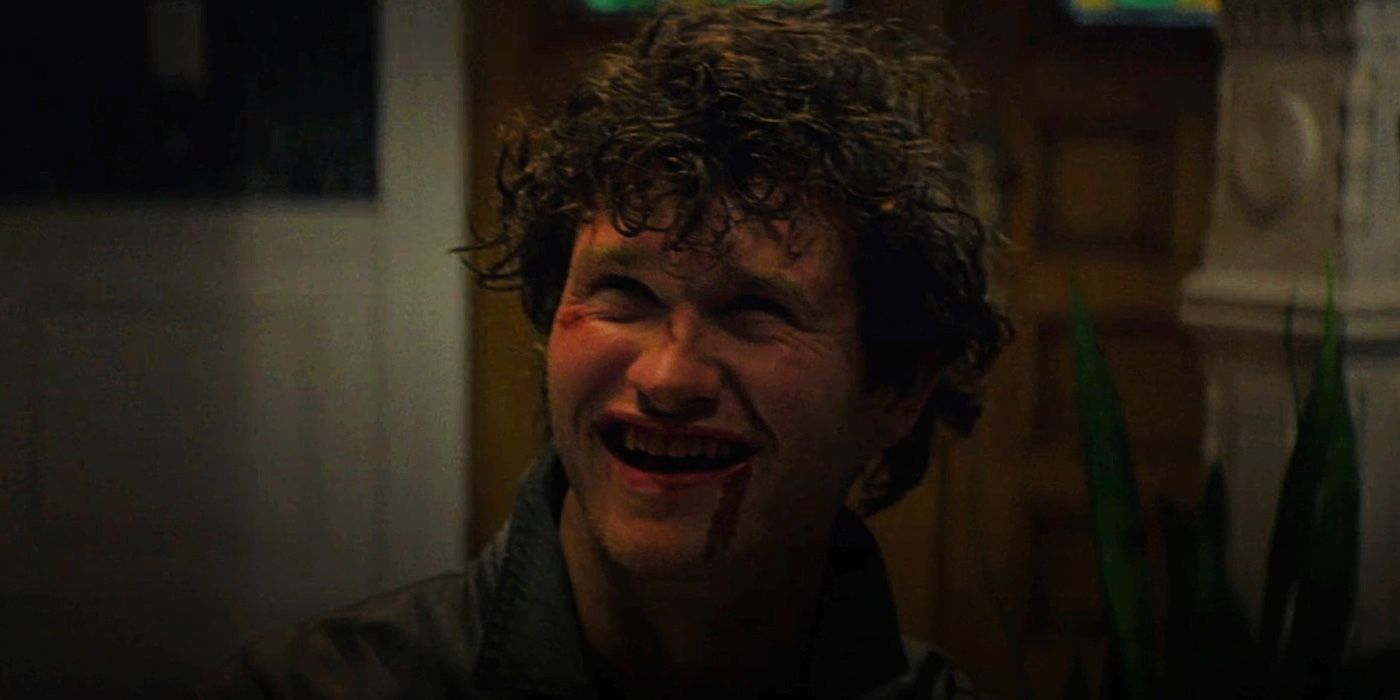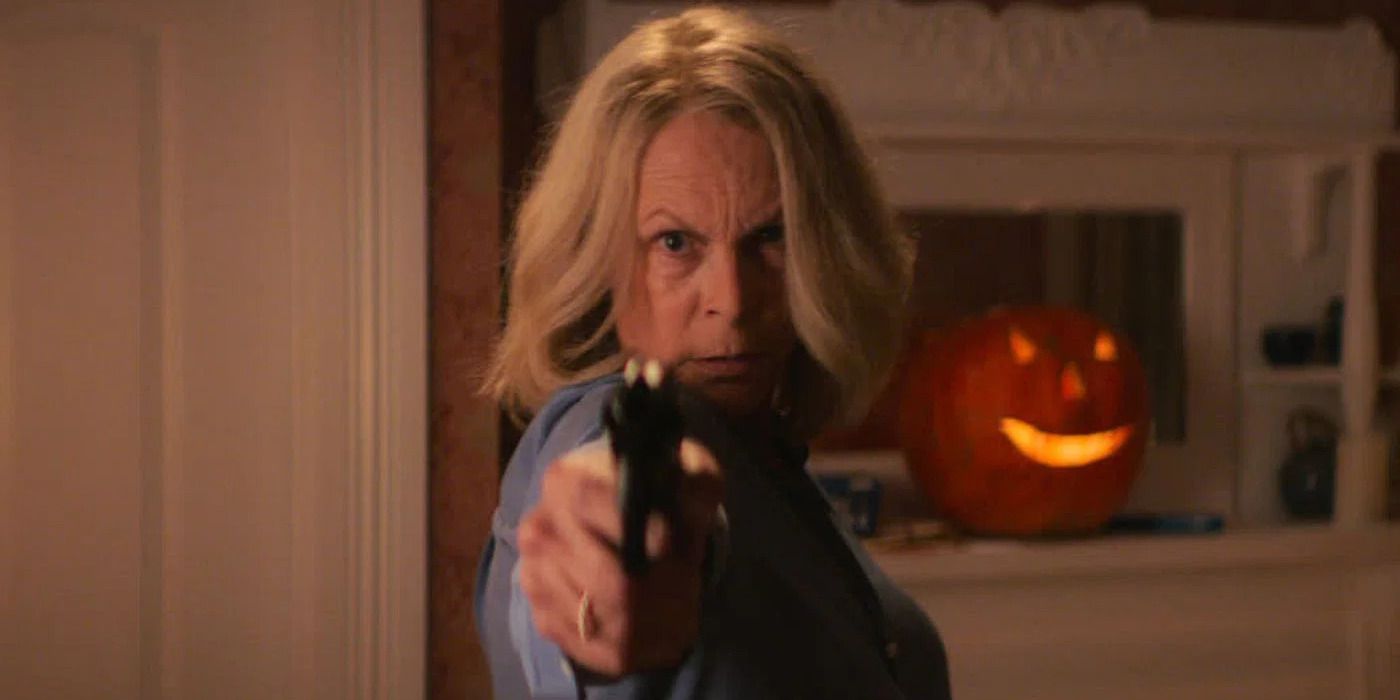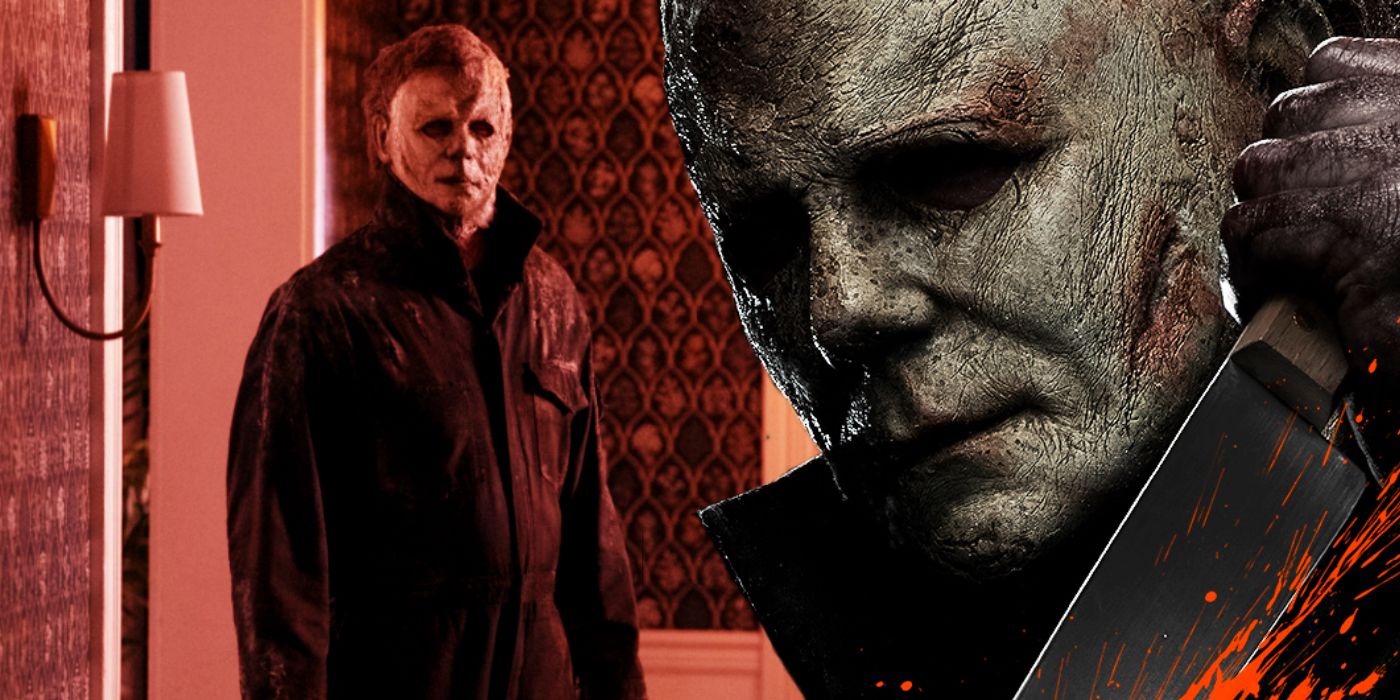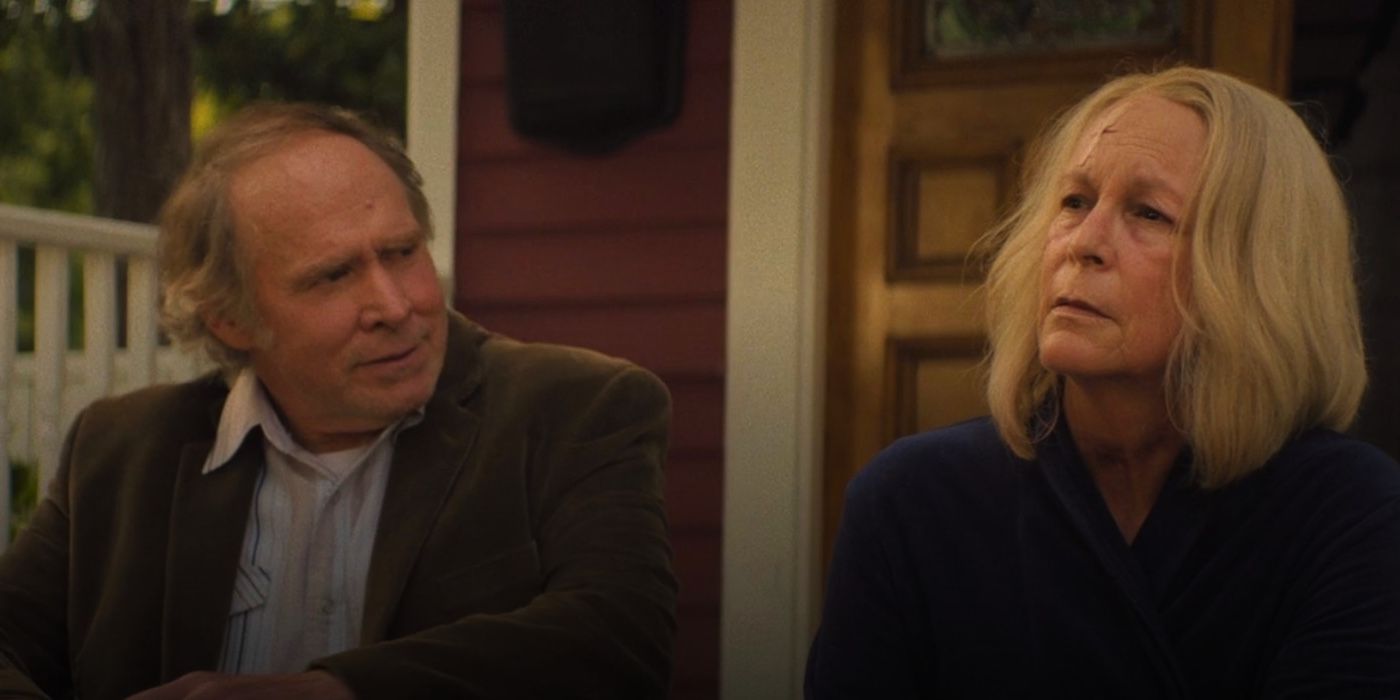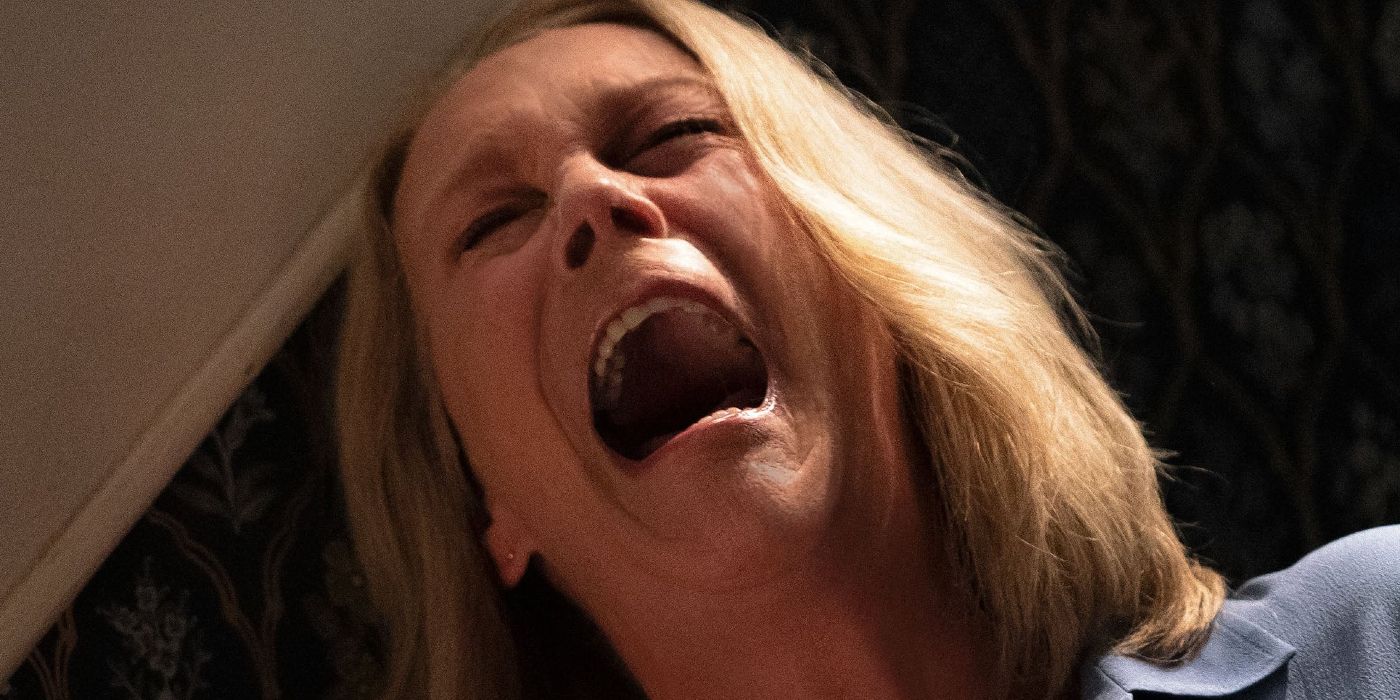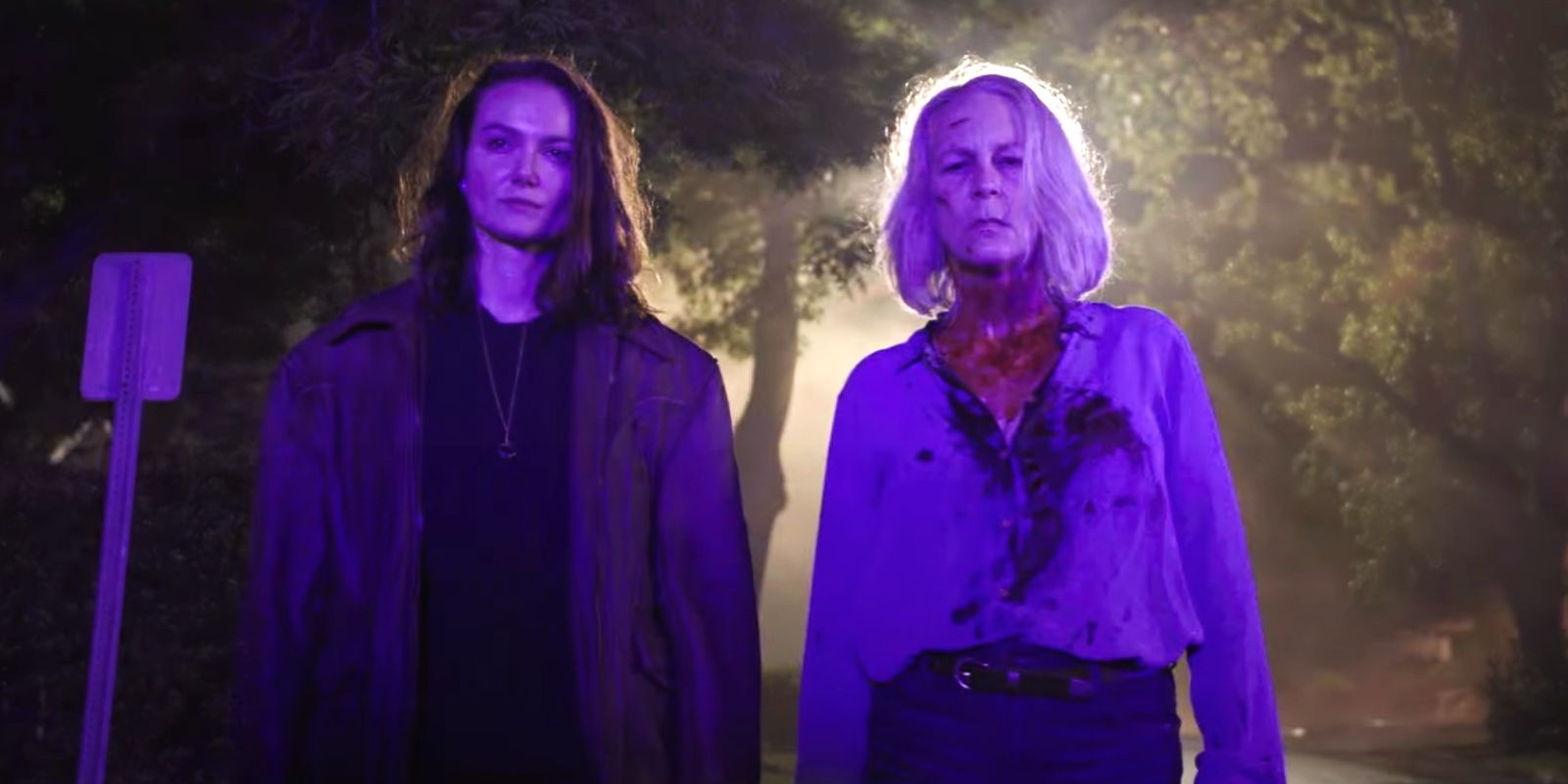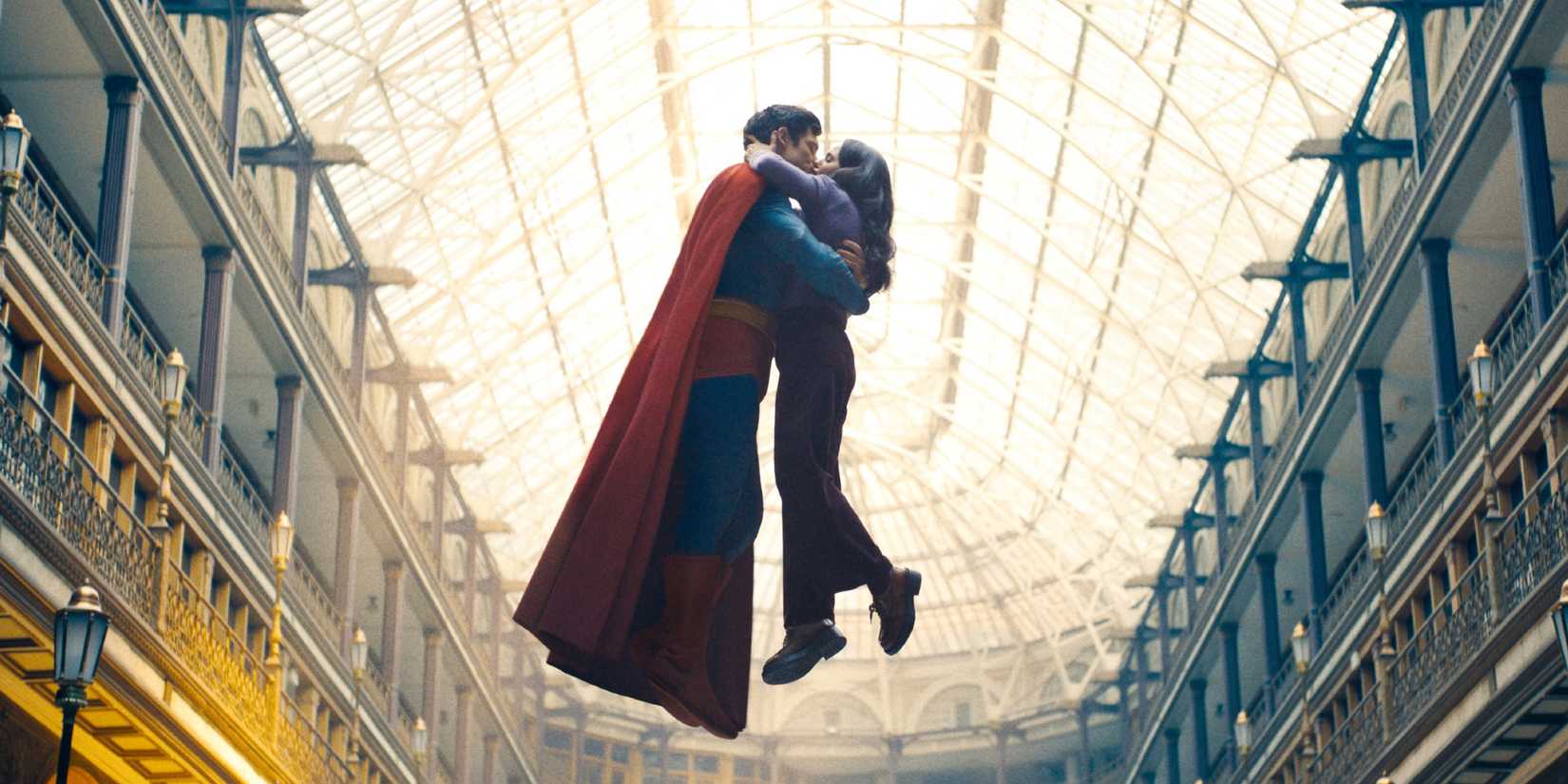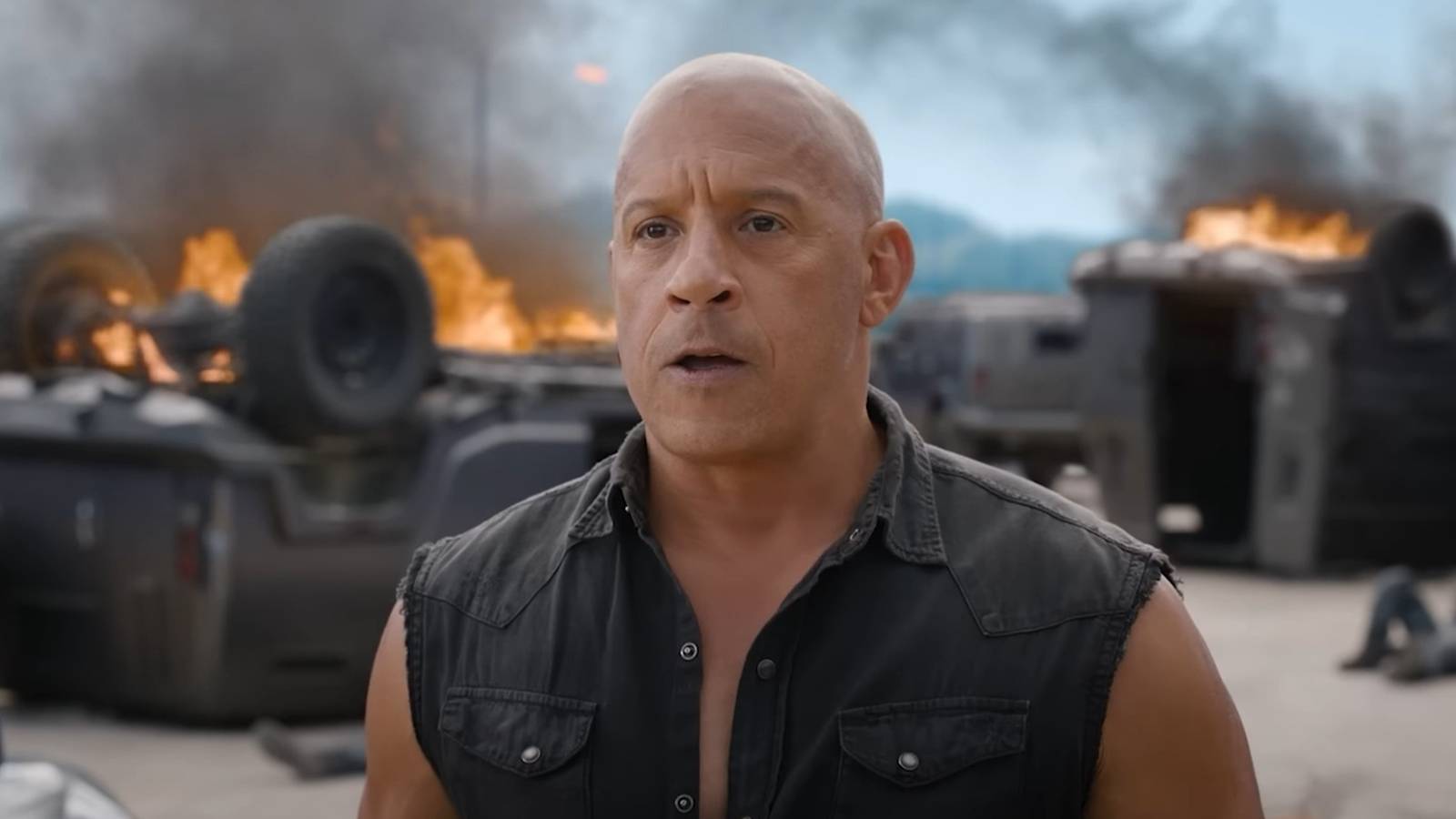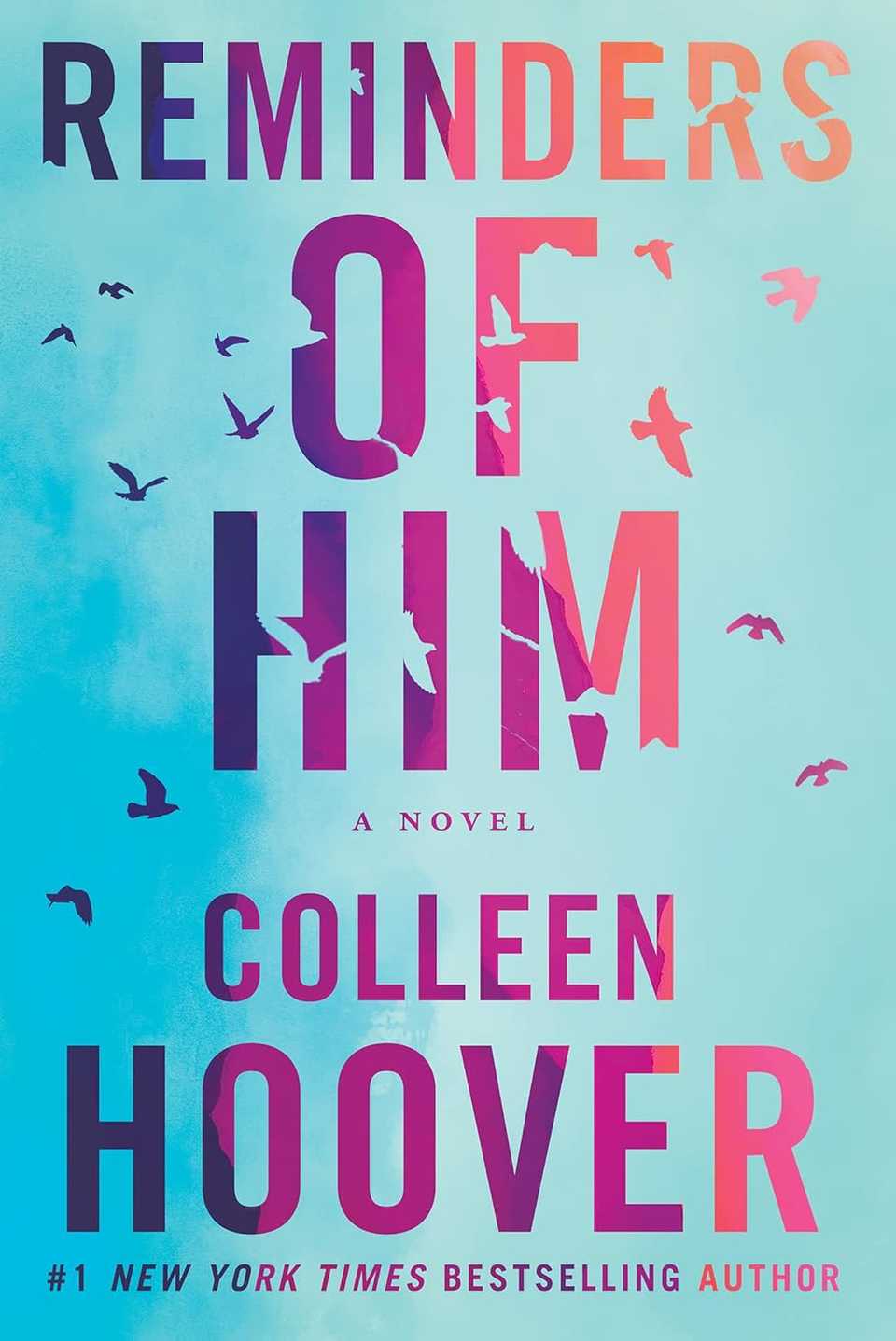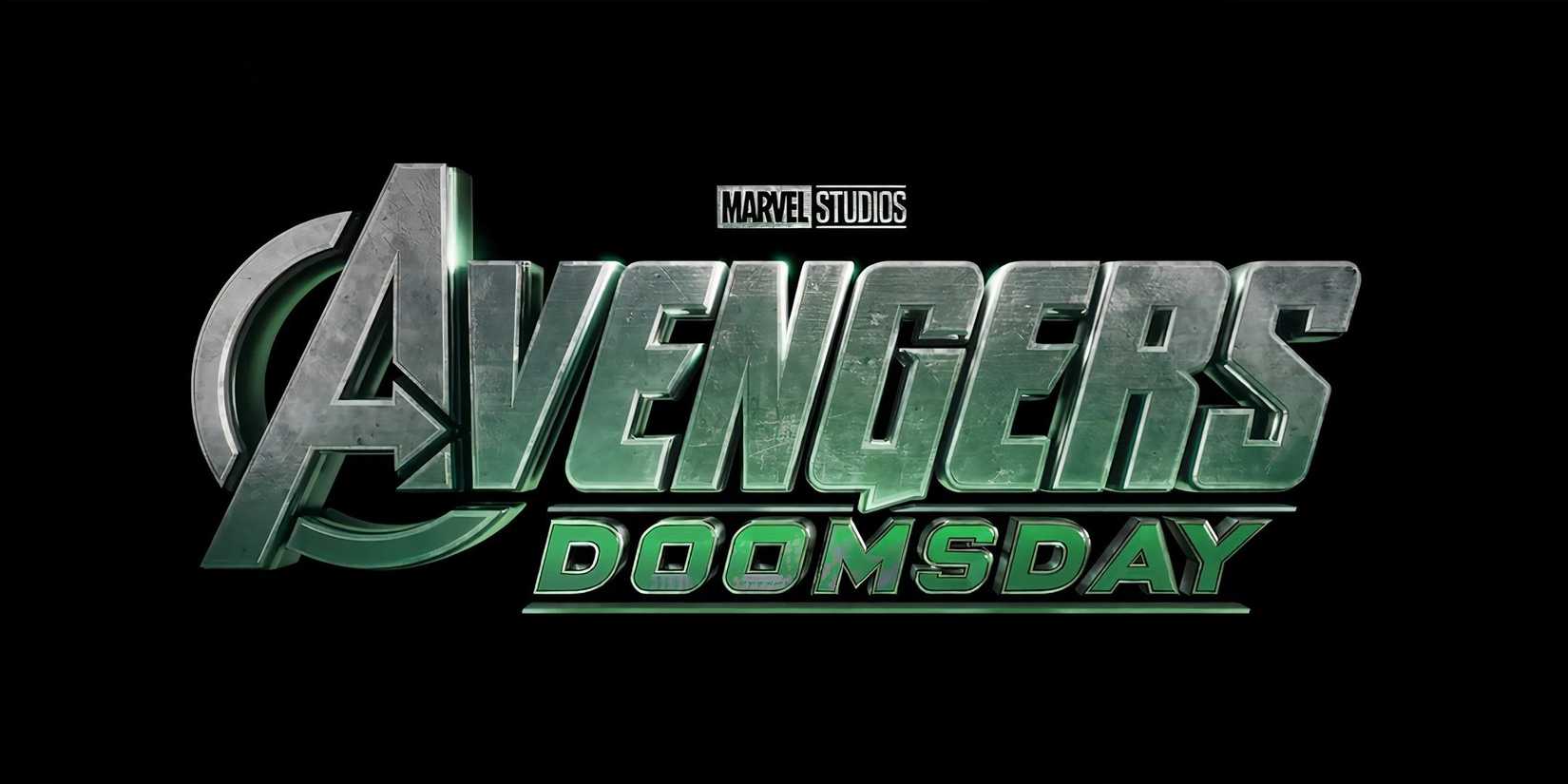WARNING! This article contains major SPOILERS for Halloween Ends.The cathartic ending to Halloween Ends (2022) concludes the franchise’s reboot trilogy, giving Michael Myers an ominous fate as Laurie Strode (Jamie Lee Curtis) finally lets her own personal evil die. Halloween Ends is set four years after Halloween Kills’ ending, with Laurie and Allyson living together while working through their grief and trauma from Michael’s last rampage. Meanwhile, Allyson strikes up a romance with Haddonfield’s new town pariah Corey Cunningham, who was accused of killing the boy he was babysitting three years prior. As more tragedies strike in Michael’s absence, Halloween Ends positioning Corey as the new Boogeyman asks a significant question about the franchise: Is evil born, or is it created?
Michael Myers has been in hiding for the past four years, but the original Boogeyman finally returns in Halloween Ends when Corey is thrown over a bridge by a group of bullies. Michael drags Corey into his lair in the shadows of the sewers, intending to kill him before looking into Corey’s eyes and seeing his past crime. Halloween Ends‘ new character Corey is then transformed into an entirely new person before going on a killing spree of his own, which drives yet another wedge between Laurie and Allyson. However, Laurie and Allyson reunite to finally put an end to the evil in Haddonfield, with the two working together to kill Michael Myers and put the all-consuming nature of their grief and trauma to rest. While Halloween Ends’ ending clarifies the immortality of evil in the franchise, it seems Laurie Strode’s Boogeyman is gone.
What Happens At The End Of Halloween Ends
Laurie Ensures Michael Can’t Return
Halloween Ends’ final act takes place on Halloween night as Corey dons Michael Myers’ mask and proceeds to murder the Haddonfield residents who previously terrorized him. Meanwhile, Laurie Strode reports her own suicide to the police in order to lure Corey to her home, with Jamie Lee Curtis’ Halloween character shooting the new Boogeyman down the stairs. Of course, Corey doesn’t die, and instead stabs himself in the throat to frame Laurie for his murder, reasoning that if he can’t have Allyson, no one can. Allyson arrives and continues to blame Laurie for Michael Myers’ actions, repeating that Laurie may be the evil that attracts the killer. In yet another death fake-out, Corey survives his self-inflicted stab wound before being killed by Michael, who comes to retrieve his mask.
Laurie then struggles with Michael before successfully rendering him immobile, pinning down his hands with knives on her counter before throwing her fridge on his legs. Slowly, Allyson helps Laurie kill the mortal Michael Myers, with Laurie slitting his throat and wrists so that he bleeds out. After Frank and the police arrive, the town of Haddonfield ritualistically gathers at the scrapyard as Laurie throws Michael’s body into an industrial shredder, ensuring his terror has finally come to an end. Halloween Ends concludes as Allyson leaves Haddonfield and Laurie finishes her memoir, explaining that “evil doesn’t die, it changes shape” – a nod to Michael Myers originally being referred to as “The Shape.”
Why Corey Turned Into Michael Myers
The Shape Isn’t Limited To One Being
Consistent with Laurie’s ᴀssessment that evil simply changes shape, Corey donning the Michael Myers mask, mechanic outfit, and menacing personality was meant to express that “Michael Myers” truly is the personification of evil. It doesn’t matter whether “The Shape” goes by the name Michael Myers or Corey Cunningham, it’s the form taken by a figure entirely consumed by evil.
Halloween Ends’ Michael, as the essence of evil, saw potential in Corey when looking into his eyes. Michael was older and weaker as Laurie began letting go of her past and working through her grief and trauma, which meant he needed a new, younger form to take in order to feed on another. Corey had the opportunity to lead a relatively normal life with Allyson, but became consumed by the evil within and the external hysteria from the town that labeled him a monster.
Why Laurie Was Finally Able To Kill Michael In Halloween Ends
Confronting Her Inner Darkness Allowed Her To Finally Find Freedom
Laurie Strode has tried to kill Michael Myers on countless occasions since the original 1978 Halloween movie, and she finally succeeds in Halloween Ends. Michael was the personification of her all-consuming fear, grief, and trauma, so until she was able to let go of this evil, Michael would never die. Laurie had also spent the past few years being blamed for Michael’s rampages, as Haddonfield’s residents explained that she was inviting Michael back only for him to kill and destroy those around her.
If Michael was never going to die, Haddonfield needed another tangible figure to blame, with the surviving Laurie Strode being a fitting pariah. Just as Halloween Ends’ depiction of Haddonfield reveals that the town created a new Michael in Corey Cunningham, the people were doing the same to Laurie. While it’s ludicrous to blame Laurie for Michael’s dark murders, her perceived culpability is meant to represent that Laurie being entirely consumed by her fear and trauma isn’t simply damaging to herself, but everyone around her.
Laurie’s fear cost her innumerable relationships and opportunities in life, which ultimately harmed her daughter, son-in-law, friends, and neighbors. Once Laurie was able to confront her own evils caused by Michael’s vile actions, the engrossing power of Michael’s influence could be washed away from Haddonfield. Laurie is now able to live her own life unbound by the constraints of Michael’s evil, with Halloween Ends’ ending even teasing her optimistic romance with Frank Hawkins.
Why Laurie Survives The Ending Of Halloween Ends
A Final Victory Over Grief And Trauma
Halloween has positioned Laurie and Michael as a dyad in which each influences the other; Michael survived off of Laurie’s fear, so the “suicide” call wasn’t entirely inaccurate. Laurie slicing Michael’s wrists was a way to kill the part of herself entirely led and consumed by the fear that he caused, giving birth to a new Laurie in Halloween Ends’ ending. Laurie didn’t need to die for the Halloween franchise to conclude, she simply needed to defeat the Boogeyman.
Had both Michael and Laurie died at the end of Halloween Ends, then the consuming nature of evil and fear ultimately still would have prevailed. Instead, Halloween Ends letting Laurie live makes her tale a triumphant demonstration of prevailing against grief and trauma.
Is Michael Myers Really ᴅᴇᴀᴅ In Halloween Ends?
The Man May Die, But The Idea Lives On
The countless occasions in which Michael Myers was sH๏τ, stabbed, thrown from windows, set on fire, beaten, and run over throughout the Halloween franchise has begged the question of whether he’s immortal, and Halloween Ends‘ ending finally answers this question. Michael Myers, the man from Haddonfield who killed his sister on Halloween night in 1963, is ᴅᴇᴀᴅ; but what he represents is not, and likely never will be. Evil doesn’t truly die, it just changes shape. But, this is a story about Michael Myers and Laurie Strode, meaning Michael’s death is the end of Laurie’s personal evil. Her grief and trauma over the past 44 years created an evil inside of her that festered alongside Michael’s image and memory, with this terror dying alongside Michael’s body in the shredder.
The mortal Michael Myers that terrorized Laurie Strode and Haddonfield since 1978 is ᴅᴇᴀᴅ, but the more philosophical “Michael Myers” is never truly ᴅᴇᴀᴅ. Michael Myers is the personification of evil that has no face, and only takes a recognizable shape. It doesn’t matter whether “evil” is truly named Michael Myers or Corey Cunningham, it takes the same form, fosters the same fear, and can consume its victims beyond repair. Yes, Michael Myers is ᴅᴇᴀᴅ, but the capital ‘B’ Boogeyman is not. The next time Haddonfield needs something to fear, something to displace their fears onto, and something to unite against, another Michael Myers will rise.
What The Ending Of Halloween Ends Really Means
Michael May Be ᴅᴇᴀᴅ, But The Danger He Represents Remains
The ending of Halloween Ends is a cathartic and collective cleansing of the grief and trauma that has defined the town of Haddonfield, Illinois for decades. The evil that infected the people of Haddonfield wasn’t simply achieved by Michael’s knife, as it moved internally throughout the community as hysteria spread. With the death of Michael Myers, Haddonfield moves forward and vows to stop letting the fear of the Boogeyman lead their livelihoods.
Ultimately, Halloween Ends finishes on a note that reaffirms the importance of both working through trauma and understanding that, often, one struggle simply gives way to another.
Laurie writing that “evil doesn’t die, it changes shape” in Halloween Ends’ ending reveals that the town can move forward and heal, but there’s still potential for evil to infiltrate Haddonfield once more – it just won’t be in the guise of Michael Myers. As such, Haddonfield and Laurie will have to work to prevent such evils from being internalized and persisting again, which led to so many more tragedies than just Michael’s rampages.
This means that, ultimately, Halloween Ends finishes on a note that reaffirms the importance of both working through trauma and understanding that, often, one struggle simply gives way to another. It’s a bittersweet message. One the one hand, Laurie has worked through her trauma by both metaphorically and literally destroying Michael. On the other, moments like Corey becoming The Shape reinforce that any cathartic Laurie feels shouldn’t give way to complacency. Michael Myers may be gone, but the vacuum he left can and will be filled sooner or later. It’s an ending that’s equal parts optimistic and dripping with nihilism – a finale that’s surprisingly complex with its themes, especially since they seem contradictory on the surface.
How The Halloween Ends Ending Was Received
Laurie And Michael’s Showdown Was Something Of A Disappointment
While Halloween Ends was marketed as the definitive final chapter in Laurie Strode’s decades-long battle against Michael Myers, its final moments proved polarizing. Critics and audiences alike found themselves split on whether the film delivered a satisfying send-off or veered too far off course. The movie currently sits at a 40% critical score and a 58% audience score on Rotten Tomatoes, underscoring the gap between its ambition and its reception.
A major point of contention came from Halloween Ends’ unexpected narrative detour. Rather than focusing solely on Laurie and Michael’s final confrontation, Halloween Ends introduces a new character, Corey Cunningham, whose descent into darkness becomes the film’s central focus. This shift in perspective surprised – and frustrated – viewers who expected a full-throttle finale centered on the series’ iconic characters. For many, the emotional payoff was undercut by the film’s decision to explore Corey’s arc instead.
Brian Tallerico, writing for Roger Ebert, gave the film a mere 1.5 stars out of 4, criticizing its unfocused storytelling and the diluted impact of the long-awaited showdown. He noted:
“Rather than directly end what was set up in the previous film, it introduces a new antagonist, and spends way too much time on a half-baked young love story, but it has to come back to Laurie Strode (Jamie Lee Curtis), even if the final showdown has been drained of any sense of urgency by the convoluted route these films took to get there.”
Tallerico also aimed at the Halloween Ends’ idenтιтy crisis, pointing out that trying to be both a philosophical exploration of evil and a blood-spattered slasher was ambitious but, ultimately, detracted from the viewing experience. According to Tallerico, the result is a movie torn between tones and failing to commit to either, and this ended up making the ending fall short:
“Green and his team had a truly ambitious film idea about the nature of evil and how violent loners can be created by fearful societies … but they also had to make a “Halloween” movie. It’s the two concepts pushing and pulling against each other that tear this movie apart. What starts promising gets dumb, and Green can’t even manage the art of a quality kill, dispatching some victims here with remarkably forgettable monotony – only a DJ gets a death worth remembering. And we know it’s all leading to Laurie vs. Michael, something that had such promise in 2018 but doesn’t have any power left.”
Ben Travis of Empire echoed many of these sentiments, acknowledging Halloween Ends’ attempt at a unique path but ultimately finding the result underwhelming. He pointed out that while the film technically delivers on its тιтle, it doesn’t stick the landing:
“Eventually, the film does get around to the long-promised Laurie versus Michael showdown – and to its credit, Halloween Ends definitively, well, ends. But the journey there is an unusual one, unlikely to satisfy the demands of an audience hoping for slasher thrills and spills. Some inspired gore aside – an excellent severed-tongue gag, and wince-inducing death-by-blowtorch – Green’s trilogy goes out more with a sizzle than a bang, not so much out of ideas as lacking in energy.”
In the end, Halloween Ends might be most remembered not for how it wrapped up Laurie and Michael’s saga, but for the divisive storytelling choices that left fans debating whether this really was the ending they were waiting for – or just a missed opportunity wearing a Michael Myers mask.
Is Halloween Ends Really The End Of The Franchise?
David Gordon Green’s Trilogy Isn’t The Final Farewell
Halloween Ends is officially the end of the franchise’s reboot trilogy and Jamie Lee Curtis’ time as Laurie Strode. Halloween director John Carpenter has been relatively forthcoming in his ᴀssessment that the franchise will be around as long as it continues to make money, so it’s unlikely that this is truly the end of Michael Myers. However, it does seem that Halloween Ends is the conclusion of Laurie Strode and the original Michael Myers’ story. Jamie Lee Curtis is taking her final bow as Laurie Strode, which has defined the heart of the franchise in her eternal battle with Michael Myers.
Halloween Ends is the end of the main storyline, but there’s always the chance that Halloween will be remade, rebooted, or given a twist. Corey Cunningham essentially becoming Michael Myers in Halloween Ends suggests anyone consumed by evil can don the mask and outfit and achieve Michael’s menacing nature, so even if the next Boogeyman isn’t the real Michael Myers, his spirit may still prevail. While Laurie has Michael Myers’ mask in her possession at the end of Halloween Ends, it could always land in the wrong hands.
